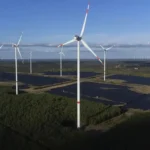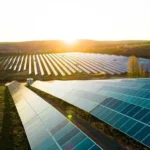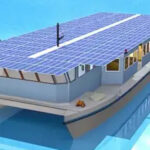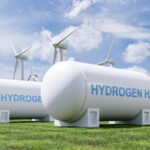Pumped Storage: A Sustainable Investment for Future Energy Needs
As the world continues to shift toward renewable energy sources, the demand for efficient energy storage solutions has never been greater. One of the most promising technologies in this regard is pumped storage hydropower. This type of energy storage system offers an effective and sustainable way to balance electricity supply and demand, making it a crucial part of the transition to greener energy systems. In this article, we will explore what pumped storage is, how it works, its advantages and disadvantages, its capacity, and how it is poised to become a significant player in the future of energy storage.
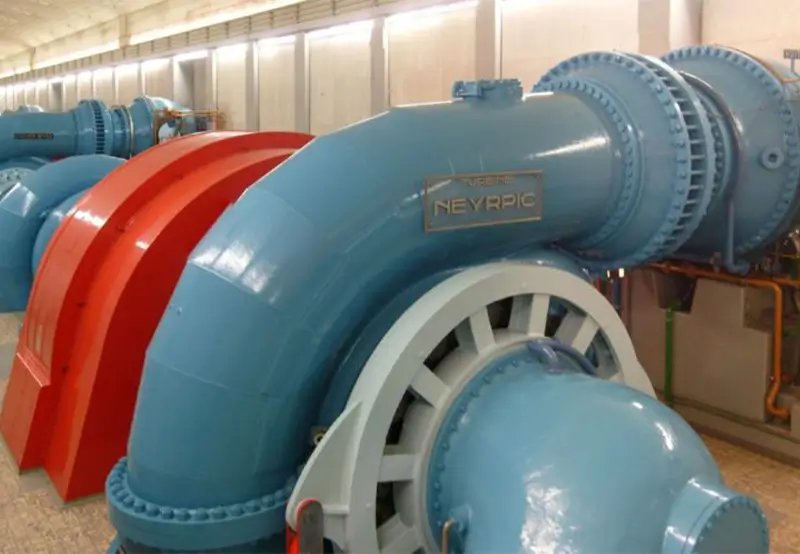
What is Pumped Storage?
Pumped storage hydropower is a type of energy storage that uses the gravitational potential energy of water to store and generate electricity. It involves two water reservoirs, one located at a higher elevation and the other at a lower elevation. The system consists of two main phases: the pumping phase and the generation phase. During the pumping phase, surplus electricity (usually during periods of low demand) is used to pump water from the lower reservoir to the higher reservoir. Then, when electricity demand is high, the stored water is released from the upper reservoir to the lower reservoir, passing through turbines that generate electricity.
The primary benefit of pumped storage is its ability to provide on-demand electricity, making it highly effective for balancing intermittent energy sources like solar and wind. When there is excess renewable energy production, pumped storage systems can store this energy for later use, and when renewable energy is insufficient, the stored water can be used to generate electricity.
How Does Pumped Storage Work?
The working principle of pumped storage is relatively straightforward. First, surplus electricity is used to pump water from the lower reservoir to the upper one, effectively converting electrical energy into potential energy. This process is known as “pumping.” The water is stored at a higher elevation, where it has the potential to generate electricity due to its increased gravitational potential energy.
When electricity demand spikes, the water stored in the upper reservoir is released, flowing down to the lower reservoir. As it passes through turbines, the potential energy of the water is converted back into electrical energy. The turbines are connected to generators that produce electricity, which is then fed into the grid.
One of the most important features of pumped storage is its ability to respond quickly to changes in energy demand. Unlike other forms of power generation, pumped storage can be activated almost immediately, making it an ideal solution for meeting peak demand periods.
Pumped Storage Pros and Cons
Like any technology, pumped storage hydropower comes with its own set of advantages and disadvantages. Understanding these can help decision-makers and energy planners determine if pumped storage is the right solution for their energy needs.
Pros of Pumped Storage
- Energy Reliability and Flexibility: One of the biggest advantages of pumped storage is its ability to provide reliable and flexible energy. It is an ideal solution for balancing intermittent renewable energy sources like wind and solar, which can be unpredictable. When these energy sources are producing surplus power, it can be stored using pumped storage, and when they are not producing enough energy, the stored power can be released.
- Efficient Energy Storage: Compared to other energy storage technologies, pumped storage is highly efficient, with typical round-trip efficiency rates ranging from 70% to 85%. This means that a significant portion of the energy used to pump the water is recovered during the generation phase.
- Large-Scale Capacity: Pumped storage systems can store large amounts of energy, making them suitable for providing backup power on a large scale. Some pumped storage facilities have capacities exceeding 3,000 megawatts, which is far greater than most other energy storage technologies.
- Proven Technology: Pumped storage is one of the oldest and most proven methods of energy storage, with more than 90 years of operational history. The technology is well-understood, and many countries already have pumped storage plants in operation.
- Low Operating Costs: Once the infrastructure is in place, the operating costs of pumped storage hydropower are relatively low. This makes it a cost-effective way to provide grid stability over the long term.
Cons of Pumped Storage
- High Initial Capital Costs: While the operational costs of pumped storage are low, the initial capital costs of building the infrastructure are high. Constructing reservoirs, installing turbines and pumps, and developing other necessary infrastructure can require significant investment. This can make it a challenging investment for many regions, especially those without suitable geographic locations.
- Environmental Impact: While pumped storage hydropower is generally considered a clean energy solution, it is not entirely without environmental impact. The construction of large reservoirs and the alteration of watercourses can disrupt local ecosystems, affect water quality, and displace communities. The environmental impact varies depending on the site and the specific design of the pumped storage plant.
- Geographic Limitations: Not every region is suitable for pumped storage. The technology requires a specific combination of geographical features, including access to two reservoirs at different elevations and proximity to existing electricity grids. This limits the locations where pumped storage can be deployed.
- Water Usage: While the water used in pumped storage is typically returned to the lower reservoir after electricity generation, the system can be water-intensive, especially in areas where water resources are already scarce. This could be a limiting factor in certain regions.
- Long Construction Time: Building a pumped storage facility can take many years due to the large-scale infrastructure required and the permitting processes involved. This means that pumped storage may not be a quick fix for immediate energy storage needs.
Pumped Storage Capacity
Pumped storage capacity refers to the amount of energy that a pumped storage system can store and subsequently generate. The capacity of pumped storage plants varies significantly depending on the size of the reservoirs, the height difference between them, and the capacity of the turbines and pumps. The largest pumped storage facilities in the world have capacities exceeding 3,000 megawatts, which is enough to power millions of homes.
In terms of energy storage, pumped storage facilities can store energy for hours or even days, depending on the specific design of the plant. This makes pumped storage one of the most reliable and scalable forms of energy storage, particularly when dealing with large grid systems and fluctuating energy supply and demand.
Conclusion
Pumped storage is a mature and highly effective energy storage technology with significant potential to help balance electricity supply and demand. By storing surplus electricity during periods of low demand and generating electricity when needed, pumped storage plays a crucial role in ensuring grid stability and facilitating the integration of renewable energy sources.
While the technology comes with certain challenges, such as high initial costs and environmental considerations, its advantages—reliable energy, high efficiency, and large-scale capacity—make it a valuable investment for the future. As the world transitions to a more sustainable energy system, pumped storage hydropower will likely continue to be a key player in meeting future energy needs.
With the ongoing shift toward renewable energy, pumped storage could be integral in addressing the challenge of energy storage and making energy systems more sustainable. It is clear that pumped storage offers a pathway to a cleaner, more reliable, and efficient energy future.
FAQs
1. Can pumped storage help with renewable energy integration?
Yes, pumped storage is particularly useful for balancing the intermittency of renewable energy sources such as wind and solar. When renewable energy production exceeds demand, pumped storage systems can store the excess energy, and when renewable energy production falls short, the stored energy can be released to meet demand.
2. What is the environmental impact of pumped storage?
Although pumped storage is a cleaner energy option compared to fossil fuels, it can have environmental impacts, such as disrupting local ecosystems and altering watercourses. Large-scale construction can affect the surrounding environment, including flora, fauna, and water quality. However, these impacts vary based on the location and design of the plant.
3. Where is pumped storage used?
Pumped storage is used in various parts of the world, particularly in regions with suitable geographic conditions. Many countries, such as the United States, China, and Switzerland, have established pumped storage plants to help stabilize their energy grids and support renewable energy integration. It is especially valuable in areas with large renewable energy resources like wind and solar.
4. Is pumped storage cost-effective?
While the initial investment in pumped storage can be high, the operational costs are relatively low, and it offers a long lifespan (often 40 years or more). It becomes a cost-effective solution for energy storage over the long term, especially when considering its high efficiency, scalability, and ability to generate large amounts of electricity.
5. How much capacity can pumped storage plants have?
Pumped storage plants can have varying capacities, with some of the largest plants capable of generating more than 3,000 MW of electricity. The amount of energy a facility can store depends on factors like the size of the reservoirs, the height difference between them, and the turbine and pump capacity.



